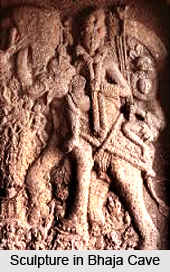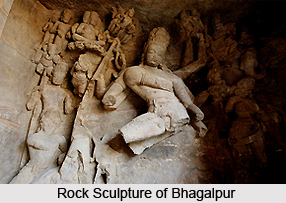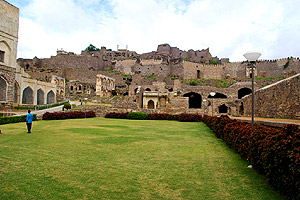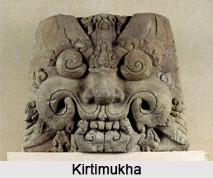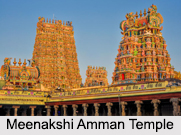 Temples of Tamil Nadu are distinctly known for their lofty gopurams, profuse sculptures and mammoth structures. The Pallavas, Cholas, Pandyas and Nayaka empires have contributed significantly in building around 33000 temples in Tamil Nadu. The motifs used in the temple sculpture of Tamil Nadu were inspired from the Hindu religion.
Temples of Tamil Nadu are distinctly known for their lofty gopurams, profuse sculptures and mammoth structures. The Pallavas, Cholas, Pandyas and Nayaka empires have contributed significantly in building around 33000 temples in Tamil Nadu. The motifs used in the temple sculpture of Tamil Nadu were inspired from the Hindu religion.
The Pallava, Chola and Pandya rulers, who ruled the state in diverse times, have added much to the development of such a Dravidian style of architecture. The earliest temples till 700 AD were built with brick and mortar. After that a new trend set in. Rocks were widely used to create magnificent monuments. Cave temples are also an integral part of the places of worship in Tamil Nadu. After the Pallavas till 900 AD, it was the turn of the imperial Cholas (900-1250 AD) to stupefy people with their skill and power. Some of the finest examples of temple sculpture in Tamil Nadu originated during the Chola dynasty. Post Cholas, it was the turn of the Pandaya, Vijayanagar and Nayaka`s turn to carry on the tradition of building impressive places of worship.
Architecture of Different Dynasties in Tamil Nadu
Pallava sculptor had perfected human physiognomy. Pallava sculptures exhibit naturalism in pose and the human bodies are thinned. There is an attempt towards stylistic presentations. The chest is wide and the nose is rather flat. The egg-shaped face and double chins are the common traits. Ornaments are kept to the minimum. However the drapes are heavy. Sculptural compositions are basically religious at times they are occasional royal portraits. The characters include human devotees. The major relief sculptures include the "Mahishasuramardini" in the cave shrines and the Pallava magnum opus, the Great Penance. It is believed that the Pallava`s forte lies in relief sculptures. However sculptures in the round, like the free-standing animals in the Ratha Complex, are exceptions to this. The large compositions like the Great Penance, Mahishasuramardini, Anatasayana make an immediate impact. Sculptures on the upper levels of the Dharmaraja Ratha receive a special mention. 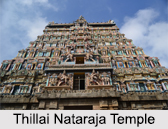
The Cholas built their temple in customs approach of the Pallava family, which were themselves controlled by the Amaravati School of architecture. The Chola artists added drew their influences from other modern sculpture and architectural schools and raised the Dravidian temple design to superior heights. The Chola era is also notable for its sculptures and bronzes. Among the alive specimens in the a variety of museums of the world and in the temples of South India, may be seen many fine figures of Shiva in a variety of forms accompanied by his companion Parvati and the other gods, demigods and goddesses of the Saivaite pantheon, Vishnu and his wife Lakshmi, the Nayanmars, other Saiva saints and many more.
Architecture of Different Temples in Tamil Nadu
Architecture of some of the famous temples in Tamil Nadu is as follows:
Airavateswara Temple: The Airavateswara Temple at Darasuram, next to Kumbakonam, is very famous. This temple was built by Raja Raja Chola II in the 12th century. This temple is currently a UNESCO World Heritage Site and has been declared as one of the Great Living Chola Temples. The temple is initially devoted to Lord Shiva. The frontage mandapa is built in the shape of a vast chariot drawn by horses. The Vimana or the small pyramidal tower consisting of some gradually smaller stories, which is typical of the south Indian temple architecture, is another attraction here. This structure is 85 feet high.
Meenakshi Amman Temple: Meenakshi Amman Temple is one of the most antique and celebrated temples not only in Tamil Nadu but, in whole India. The temple is dedicated to Goddess Parvati in the appearance of Meenakshi and her husband, Lord Shiva in the form of Lord Sundareshwarar. The temple is a masterwork of the Dravidian architecture. The splendidly sculptured and decorated "Gopurams" of the temple are its main highlight which can be seen from still a far-off distance. Further gopurams, intricately carved figures and scenes portrayed from Indian mythology in the halls put in to the artistic attraction of the temple. The temple"s thousand pillared hall is once more an engineering wonder with each pillar built of a single stonework rock producing a different musical note.
Sri Ranganathaswamy Temple: The Ranganathaswamy Temple is situated in Srirangam. It is one more work of art of the Dravidian architecture. The temple has 49 sub-shrines and is spread with 21 vividly carved Gopurams with the main or the "Raja Gopuram" standing tall at 236 ft. this makes it the tallest in Asia. The temple has 7 prakaras or areas with the presiding deity of Lord Vishnu in the form of Lord Ranganathaswamy reclining on five-headed serpent, preserved in the secret prakara. The tower above the deepest prakara is in the shape of "Om" and is totally covered with Gold.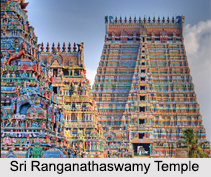
Brihadeeswarar Temple: The Brihadeeswarar Temple is one of the largest temples in India. It is dedicated to Lord Shiva and is situated in the Thanjavur district of Tamil Nadu. It is currently under UNESCO World Heritage Site under the list of "Great Living Chola Temples". "Vimana" or tower is also maintained to be the tallest in the world. The Brihadeeswarar Temple is the world"s first temple which is totally built from stonework.
Kanchi Kailasanthar Temple: The "Kanchi Kailasanthar Temple" is situated in Kanchipuram district of Tamil Nadu. The temple is believed to have been built under the sovereignty of the Pallava Dynasty. Carved totally out of stonework, this temple is the oldest temple in Tamil Nadu devoted to Lord Shiva. The architecture of the temple yet again showcases a shining Dravidian way with a carefully carved pyramidal shape tower on the main workroom and 58 small Shiva shrines covered in the complex. Famous highlight of the temple are the wonderfully carved sculptures of Lord Shiva and his wife, Goddess Parvati in different dance postures which can be seen decorating the internal walls.
Jambukeswarar Temple: Jambukeswarar Temple situated in the Srirangam. The temple symbolizes a Dravidian style of architecture with 7 tiered gopuram decorated with subtle carvings. There are 5 enclosures inside the temple with the private being the main workroom accommodation the Shivalingam in the form of Appu Lingam. There is an underground stream curving under the Shivalingam from which water always flows out.
Ramanathaswamy Temple: Ramanathaswamy Temple is situated in the island of Rameswaram in Tamil Nadu. The construction of this temple is believed to have been built throughout the 12th century CE by the Pandya leaders. The tallest of its 4 gopurams stands at the height of 126 feet metres and is built in classic Dravidian style. The temple is also recognized for housing best passage hall in India made of roughly 1000 intricately carved stonework pillars. A huge statue of Nandi is 6 metres tall.
Ekambareswarar Temple: The Ekambareswarar Temple is believed to have been existing since 600 AD. The construction of the temple showcases a signature Shaivite construction with a tall gopuram, 5 prakrams or concentric circumambulatory areas. The 1000 pillared hall adorning carvings of 1008 Shivlingas is said to be added by the Vijayanagara kings during 15th century.
Bala Murugan Temple: The "Bala Murugan Temple" is dedicated to Lord Murugan. The presiding deity of the temple is Lord Murugan which is standing tall at a height of 4.5 feet. There is a sanctum sanctorum; a sculpture of peacock made with green emerald is in the exterior side which are religiously important. There is a shrine in the temple complex which is dedicated to Lord Murugan and his wife.
Kapaleeshwarar Temple: The "Kapaleeshwarar Temple" situated in Mylapore district of Chennai. It was built in the reign of the Pallava Kings through 7th century CE. The temple is one of the important pilgrimage sites in Tamil Nadu for the Shaivites. Decorated with a vast rainbow-coloured Gopuram, pillared halls and a water body; the Kapaleeshwarar Temple presents a fine model of a right Dravidian style of architecture.
Nagaraja Temple: The "Nagaraja Temple" is dedicated to the serpent king Vasuki and is situated in the Nagercoil town of Kanyakumari district. The architecture of the temple is simple with scores of sculptures and images of different snakes decorating the walls, trees and pond around. The major sanctum enshrines the deity and is guarded by two vast statues of five-headed serpents. Inside the temple building, there is a Shivlingam and idol of Vishnu in Anant Shayana position.
Thillai Nataraja Temple: The "Thillai Nataraja Temple" is one of the most ancient temples of Tamil Nadu which is dedicated to Lord Shiva in the figure of Nataraja. The Nataraja Temple is also one of the "Panch Bhuta Sthalas" with each one dedicated to five elements of universe - earth, air, water, fire and space; this temple signifies the fifth element, space. The temple also has a shrine for Sivakamasundri recognized as the Sivakami Amman Temple and a 1000 pillared hall designed in the form of a chariot. Dating back to the Chola period, the temple and the hall are decorated with figures of dancers, drummers and musicians on the walls. The tall gopurams of the temple decorated with carvings of Hindu gods and various signs of Lord Shiva and dancers representing 108 postures of Bharatnatyam.
